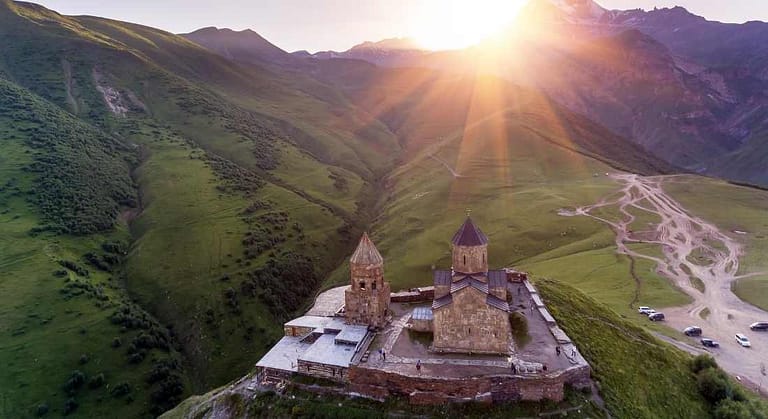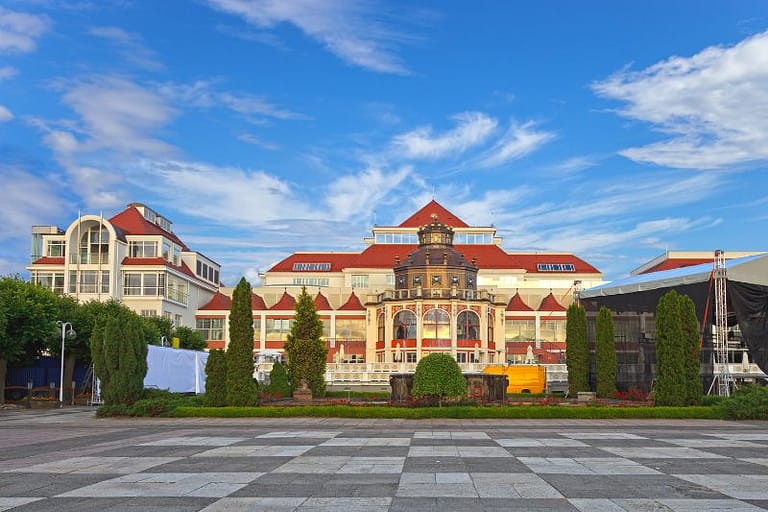The fascinating Beefeater Tower of London tour experience
Today, the Tower of London might seem like a charming castle dropped smack down the middle of a modern city. That wasn’t always the case during its 900+ years of history. Its purpose: to awe and intimidate royal subjects and enemies. Over the centuries, it was also a place of death and torture. You can learn all about it and its famous residents during the Tower of London Beefeater tour when you visit London.
Affiliate Disclosure – This post contains affiliate links. If you make a purchase through these links, I may earn a commission. This doesn’t affect your purchases or any fees you may pay for the product or service. Read more in my DISCLAIMER.
Tower of London history
After his victory at Hastings in 1066, William the Conqueror started to expand his London fortress with a new and imposing stone tower. Partly to intimidate and awe Londoners, and partly to keep them out. The new structure took about 20 years to complete using whitewashed stones imported from France. It is known as the White Tower. The current design of the whole complex is a result of additional expansions over the years.
The Tower has played an important part in England’s history since its beginning. It was a royal residence, a prison and home to a menagerie of wild animals. The royal mint, a records office, as well as an armoury and barracks for troops, had a home here.
The Tower of London was a place of luxury and misery. Many Londoners, including royals and commoners, have lost their lives here. Their heads often adorning its gates as a grim warning to everyone else. Treason was often the name of the game, and the stakes were very high. Whatever their crime, they all arrived the same way – down the River Thames and through the Traitor’s Gate. Upon arrival, the Yeoman Warders took them to await their fate, which usually meant death.
Four of Britain’s queens have entered the gates as prisoners. Two of them were Henry VIII’s wives – Anne Boleyn and Catherine Howard – the others were Jayne Gray and young Elizabeth Tudor. Only one of them managed to walk out alive. In case you’re not a history buff, it was Elizabeth, Henry’s daughter with Anne Boleyn. She went on to rule England for 44 years!

Edward IV’s two sons – often referred to as the Princes in the Tower – also met their tragic end at the Tower of London. The boys disappeared one day in 1483 while in the care of their uncle. The uncle, suspected of their murder, eventually became Richard III. Two skeletons matching the boys’ age when they disappeared were unearthed in 1674 and tested in 1933, adding credibility to this story.
Yeoman Warders – why are they called Beefeaters?
Yeoman Warders, the Tower’s official guardians, became a staple during the reign of Henry VII. Why are they called Beefeaters? Well, as his personal bodyguards, they lived and travelled with the king and enjoyed special privileges. One of those privileges was access to the king’s table. As the story goes, the guards received beef portions as part of their pay and had unlimited access to the meat at the table. Hence, they became known as Beefeaters. Some Beefeaters today happen to be vegetarian, which makes the nickname a bit ironic.

The Beefeaters became a permanent staple at the Tower to guard it. Their main role was to look after prisoners and crown jewels. It was a post of privilege and honour. Today, 37 Yeomen Warders are living at the Tower. To become eligible for the Yeomen Warder post, you need to be retired from the Armed Forces with at least 22 years of service, reaching the warrant officer’s rank and holding the Long Service and Good Conduct medal.
If you’re wondering if there were any lady Beefeaters at the Tower, the answer is yes. In 2007, the first female Yeoman Warder, Moira Cameron, was appointed, breaking centuries of male exclusivity in this role. Since then, she has been joined by two other women who serve as Yeoman Warders at the Tower of London.
Tower of London Tour with Beefeaters
While today their role is mostly ceremonial, the Warders also act as greeters and guides and carry out the daily Ceremony of the Keys. They also do tours of the Tower. The Beefeater tour is an experience unlike any other. After all, this is their home, and they know the place like the back of their hand. The tours are every half hour. There is no additional cost on top of your admission ticket to take them.
I was very excited to visit the Tower of London and even more so at the opportunity to partake in the Beefeater tour. Maybe it was the history nerd in me or that the Tower has such an important past. Either way, my visit here was an important stop during my London trip, and it’s something I definitely recommend to everyone.

My experience started with a guided tour by one of the Yeoman Warders named John. For about an hour, he entertained us with educational and insightful tales of the tower’s history. The Beefeaters, it seems, are also great storytellers and offer many interesting details about their home.
Book your private Beefeater tour today – Book now!
The Tower of London today
John, like the rest of the Yeoman Warders, lives on the premises. The Warders and their families rent out apartments in the complex, a tradition dating back to the 13th century. There is also a doctor on the property and a chaplain who looks after the chapel. There is even a special pub here, reserved only for the Warders.

Our tour included colourful stories of the Traitor’s Gate, the Bloody Tower and the many ghosts that supposedly make an occasional appearance. With the many laughing and happy faces around me, it was hard to imagine this place as a place of death and torture.
A quick visit to the torture exhibit and a stop amidst the gardens, where the memorial to those executed here lies, is a somber reminder of the Tower’s dark past. While today it’s a pleasant spot, it wasn’t always so.
St. Peter ad Vincula
The chapel at the Tower of London is accessible only by being part of the Beefeater tour. As we entered, John asked us to sit and be respectful before he told us its history. The church still holds religious services as it has for centuries.
As the story goes, Queen Victoria’s decision to restore the chapel led to the discovery of many headless corpses beneath the floor on which we were seated. I must admit that I had a few unpleasant scenarios that crossed my mind as I tried to picture the discovery. The remains have since been respectfully reburied behind a marble slab, but that didn’t stop the little hairs on the back of my neck from standing up.

Branding someone a traitor meant that his or her body didn’t warrant a proper burial after death. Traitors’ heads often adorned the spikes at the London Bridge, while their corpses ended up beneath the church’s floor like a makeshift cemetery.
Torture and confinement at the Tower
The prisoners held at the Tower of London experienced various ways of confinement. One’s crime and social status often played a deciding factor in how their imprisonment looked like. While some languished locked up in the dungeons, others suffered in solitary confinement. Those of higher stature and wealth had more freedom to move around the property, with some even having servants at their disposal.

You can tour the Beauchamp Tower to the west of Tower Green, where you’ll find graffiti carvings of some famous prisoners, including Robert Dudley and his brothers. The tower, built around 1281, has housed prisoners for centuries and provides a deep connection to the past.
For an exhibition about torture methods and instruments used at the Tower, head over to the Lower Wakefield Tower. Even though the various devices are replicas of the originals, they still provide a very grim picture of the pain inflicted on many tortured here.
Royal Armouries Collection
For a glimpse of the military armour of the royals, head over to the White Tower. From Henry VIII’s tournament armour to the gilded ones of Charles I and James II, the Line of Kings will impress you. While it might be hard to imagine Henry fitting into the fancy silver armour with fine engravings, we should remember that he wasn’t always as large as he was in his later life.

Tower of London crown jewels
For a less sombre experience, head over to see royal crown jewels, still used in present-day ceremonies. The jewels have been stored and displayed here since 1661. As the Tower of London was the most secure stronghold, many valuable royal objects found their way here over the years. Unfortunately, photos were not allowed inside.

The world-famous collection of 23,578 gemstones, displayed in glass cases, dazzles visitors thanks to strategically positioned lighting and settings. You can also learn about the different pieces, how they are used during royal ceremonies and their symbolism.
Animals at the Tower
The Tower of London tour is also a great way to learn about the many animals that lived here. For over 600 years, the Tower was home to polar bears, lions, tigers, monkeys, zebras, elephants, ostriches and even kangaroos. Various visiting dignitaries bestowed wild animals upon the king, a common practice in European courts of the day.
Exotic animals, especially those not native to the land, became objects of curiosity of the court and a monarchy’s status symbol. During the 19th century, the animals found a new home at a newly created zoo in Kensington Garden, ending their presence at the Tower.
Much like the yeomen of the guard, ravens have had a long presence at the Tower. The Tower had been their home for as long as anyone can remember. According to the legend, the Tower of London and the entire kingdom will fall if the ravens ever leave the fortress. Today, seven ravens live at the Tower. Under the care of the Ravenmaster, the birds eat an assortment of raw meats twice a day with a special treat of biscuits soaked in blood. Mmmmm. Nothing but the best.
Tickets and prices
The Tower of London is open daily with the exception of December 24-26 and January 1.
March 1 – October 31
Tuesday-Saturday: 9 am to 5:30 pm
Sunday-Monday: 10 am to 5:30 pm
Last admission: 5 pm
November 1 – February 28
Tuesday-Saturday: 9 am to 4:30 pm
Sunday-Monday: 10 am to 4:30 pm
Last admission: 4 pm
Detailed travel information for your visit to the Tower of London and ticket prices.
FAQ
Why do they call them Beefeaters?
It’s believed to have derived from the fact that these elite guards of the Tower of London were once paid partially with rations of beef. Hence, Beefeater became a colloquial nickname for them.
What is the difference between a yeoman and a Beefeater?
The terms Yeoman and Beefeater are often used interchangeably, but there is a distinction. All Beefeaters are Yeoman Warders, but not all Yeoman Warders are Beefeaters. Beefeater is a nickname specifically used for Yeoman Warders at the Tower of London. Yeoman Warders can serve in other capacities, but those stationed at the Tower are commonly referred to as Beefeaters due to tradition.
How long does the Tower of London with Beefeater tour take?
The Beefeater tour at the Tower of London typically lasts about 60 minutes. During this guided tour, a Beefeater will lead you through the historic grounds, sharing captivating stories and insights about the Tower’s past.
Travel Resources
Planning your next trip? Check out the resources I use and start planning your perfect getaway today!
- Flights: Find the best flight deals on Kiwi.com (my new go-to for flights)
- Book your accommodations: Find the best prices on hotels with Booking.com
- What to do: Find the perfect tour with Viator
- Need a car? Book your ride with Rentalcars.com
Check out my travel resource guide for more resources to help you plan your trip.







